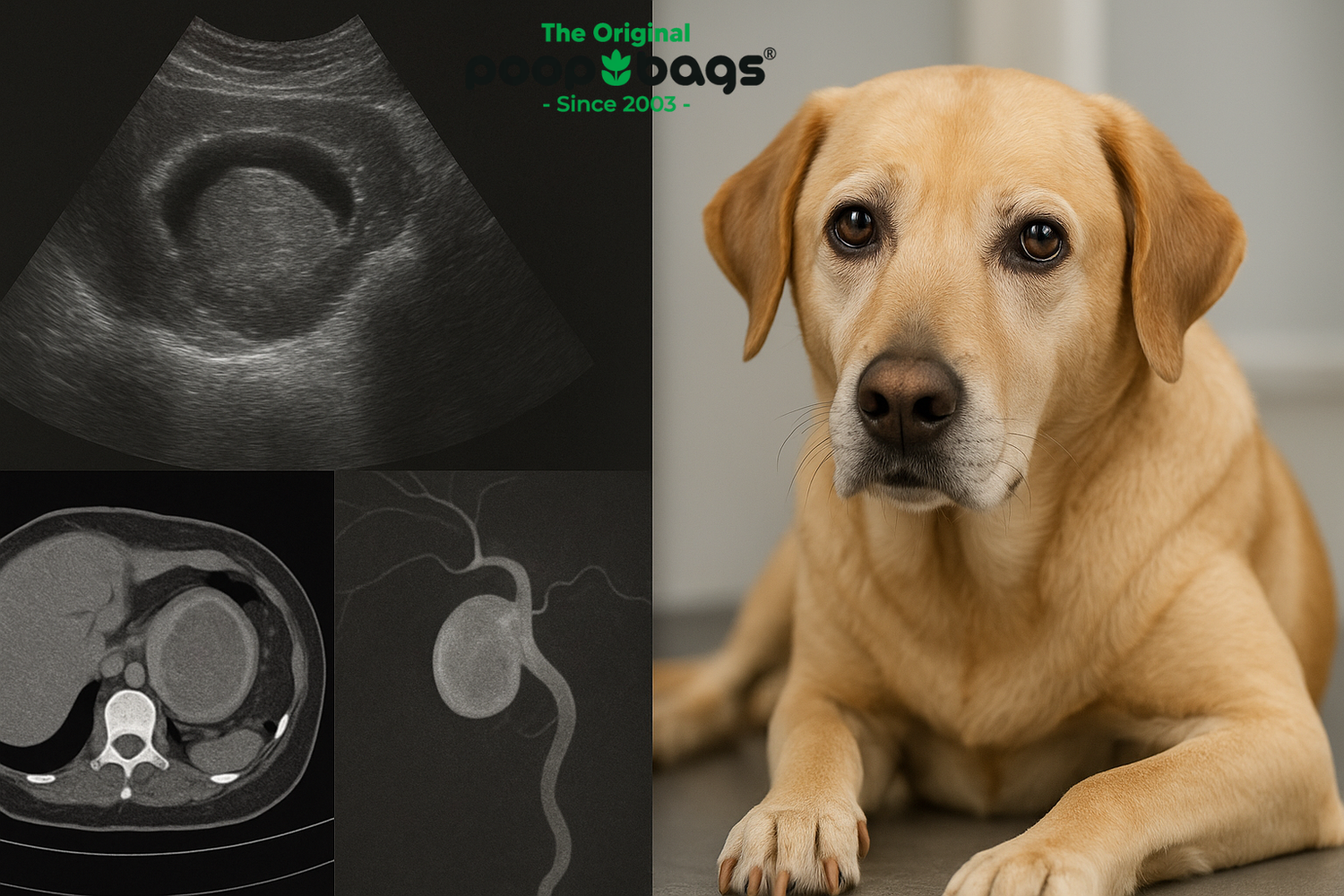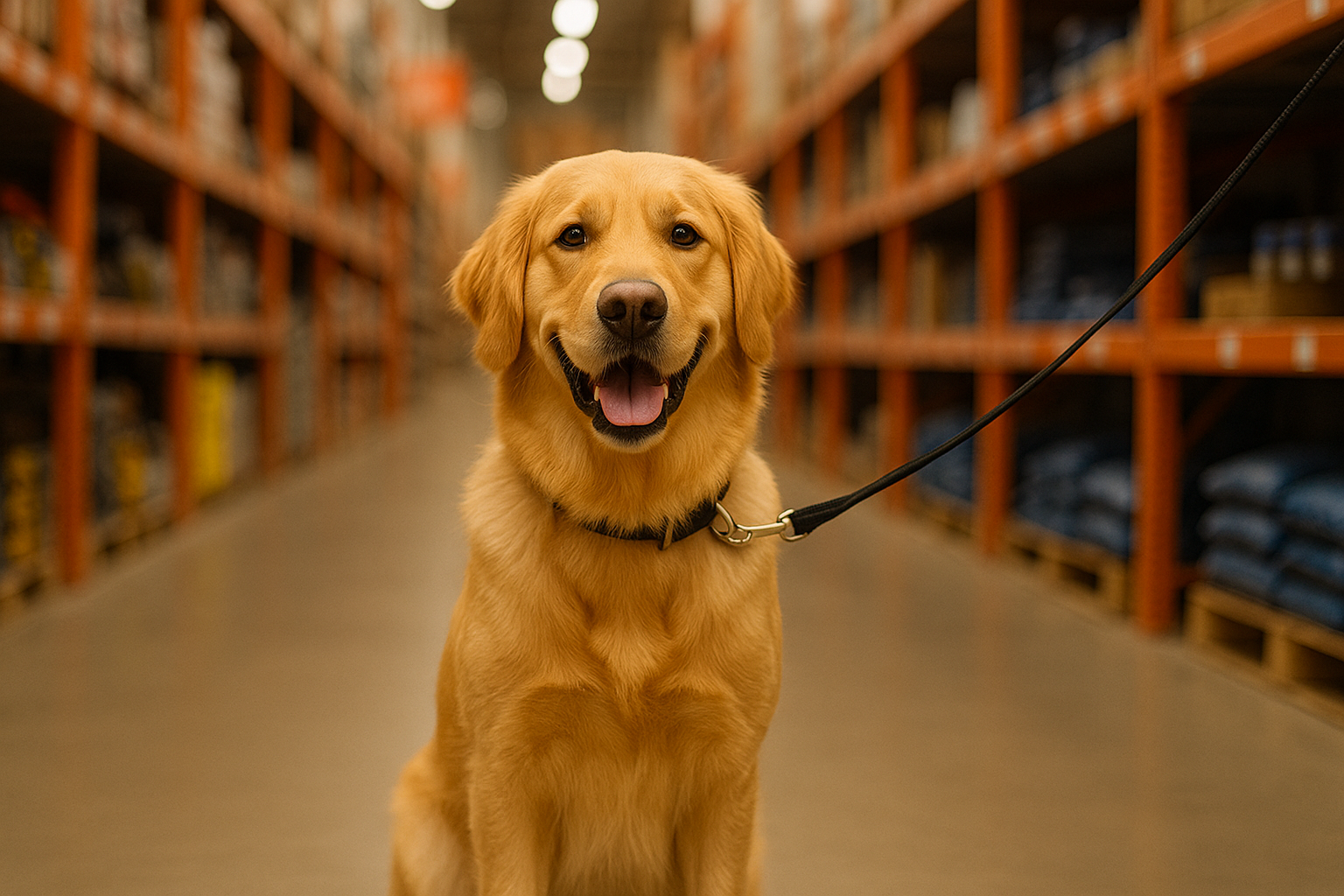An aneurysm is a localized bulging or dilation of a blood vessel (most often an artery) caused by weakening of the vessel wall. Wag!+1 In dogs, although they are rare, aneurysms have been reported. Merck Veterinary Manual+1
In more detail:
-
The blood vessel has three layers; when the middle layer (tunica media) weakens, the vessel wall can dilate and form an aneurysm. Merck Veterinary Manual+1
-
There are different types: a true aneurysm involves all three layers of the vessel wall, while a pseudoaneurysm (or false aneurysm) involves a breach in the vessel wall where blood collects outside the normal layers forming a contained sac. AVMA Journals+1
In short: a weak spot → blood presses against it → bulge forms → risk of rupture or clot formation increases.
Where and How Does it Happen in Dogs?
Though uncommon, aneurysms in dogs have been documented in several vessels:
-
In large arteries like the aorta (thoracic or abdominal region) can lead to what is known as an aortic aneurysm. Wag!+1
-
Peripheral arteries (for example, behind the knee, groin, neck) in what is called a peripheral aneurysm. Wag!
-
In rarer cases, in the portal vein (a vein supplying the liver) or cranial vena cava in dogs. PubMed+2ScienceDirect+2
-
Aneurysms are often asymptomatic until something goes wrong (rupture or thrombosis). The standard veterinary reference says: “Aneurysms cause no clinical signs, unless a dissection or hemorrhage occurs or an associated thrombus develops.” Merck Veterinary Manual
Causes & Risk Factors
What causes a blood vessel to weaken in a dog? Some of the known or suspected factors include:
-
Congenital or inherited vessel wall weaknesses. For example, certain breeds (though data is limited) may have familial predispositions. Wag!
-
Chronic high blood pressure (hypertension) placing extra stress on vessel walls. Merck Veterinary Manual
-
Atherosclerosis or degenerative changes in the vessel wall. Wag!+1
-
Trauma or injury to the vessel. Wag!
-
Infections or inflammatory conditions affecting the vessel wall (for instance, a mycotic aneurysm caused by a fungal infection in a dog was reported). PMC
-
Vessel catheterization, or surgical/medical interventions in the area of vessels (increasing risk of pseudoaneurysm or dissection). Merck Veterinary Manual
Because aneurysms are rare in dogs, many of the risk factors are extrapolated from human medicine and small veterinary case reports, which means we still have much to learn.
Signs & What to Watch For
Because many aneurysms don’t show signs until something drastic occurs (rupture or clot formation), being aware is helpful. Possible signs (depending on location) may include:
-
Sudden collapse, weakness, or loss of consciousness (especially if a cerebral or aortic aneurysm ruptures). Wag!+1
-
Bleeding from ears or nostrils (in the case of vessel rupture into those areas). Wag!
-
Blue‐tinged skin or mucous membranes (cyanosis) if blood flow is compromised. Wag!
-
Respiratory distress (if the aneurysm involves chest/large vessels interfering with lung/heart function). Wag!
-
A visible or palpable pulsating lump under the skin (in peripheral artery aneurysm). Wag!
-
Limb weakness, cold limbs, poor or absent pulse distal to the aneurysm (if the aneurysm or clot from it reduces blood flow). Wag!+1
Because many signs are non‐specific, if you notice something unusual (especially sudden changes) the best step is to contact your vet.
Diagnosis
Diagnosing an aneurysm in a dog often requires advanced imaging and a high index of suspicion. Some diagnostic tools include:
-
Ultrasound (especially for accessible vessels or for initial screening)
-
Echocardiography (for vessels near the heart)
-
CT scan or MRI (for better visualization, especially of internal aneurysms) Wag!+1
-
Blood tests to check for clotting/underlying disease (especially if clot formation is suspected) MSD Vet Manual+1
-
In some cases, surgical exploration (in an extremely limited number of cases) revealed aneurysms incidentally. PubMed
Because aneurysms are rare and silent until severe, they may not always be caught early.
Treatment & Prognosis
Treatment depends heavily on the location, size, whether there’s rupture or clot formation, and the dog’s overall health. Some points:
-
For many aneurysms that are intact and not causing immediate problems, monitoring may be chosen. Because intervention is risky and limited in veterinary medicine. Wag!
-
If clot formation (thrombosis) is present, antiplatelet or anticoagulant therapies might be used (in dogs, this is less well established than in humans). Merck Veterinary Manual+1
-
If a rupture occurs (especially in a major vessel like the aorta or a cerebral vessel) the prognosis is poor. Wag!+1
-
Surgical repair is occasionally reported (for example in peripheral vascular aneurysms) but is not routine. Many times, the risk of surgery is high, cost is high, and long‐term outcomes uncertain. Wag!
Prognosis: guarded. If the aneurysm remains stable then the dog may live without incident. But rupture or clot‐related complications can be life‐threatening, often very quickly.
What You Can Do as a Pet Owner
Given how rare aneurysms are in dogs, you don’t need to panic—but you can take steps to help minimize risk and stay alert:
-
Keep your dog healthy: good weight, regular exercise, avoid hypertension (if your vet diagnoses it)
-
If you notice sudden changes in breathing, collapse, or unusual lumps (especially ones that seem to pulse) contact your vet
-
Maintain regular vet check-ups—if your vet identifies a high‐risk breed or condition (e.g., congenital vascular issues), ask about imaging or screening
-
Be aware of unusual signs (especially sudden onset) — even though they may indicate something other than an aneurysm, they may warrant prompt evaluation
-
If your dog undergoes major surgery or has vascular access (catheters, etc), ask your vet about monitoring for vascular complications
Final Thoughts
While an aneurysm in dogs is rare, it is a serious condition when it occurs. Awareness is key: weak vessel wall → bulge → risk of rupture/clot → possible rapid deterioration. As a pet owner, you may never see this in your dog—and frankly most dogs won’t ever develop one—but knowing the possibility means you can act quickly if something unusual happens.











